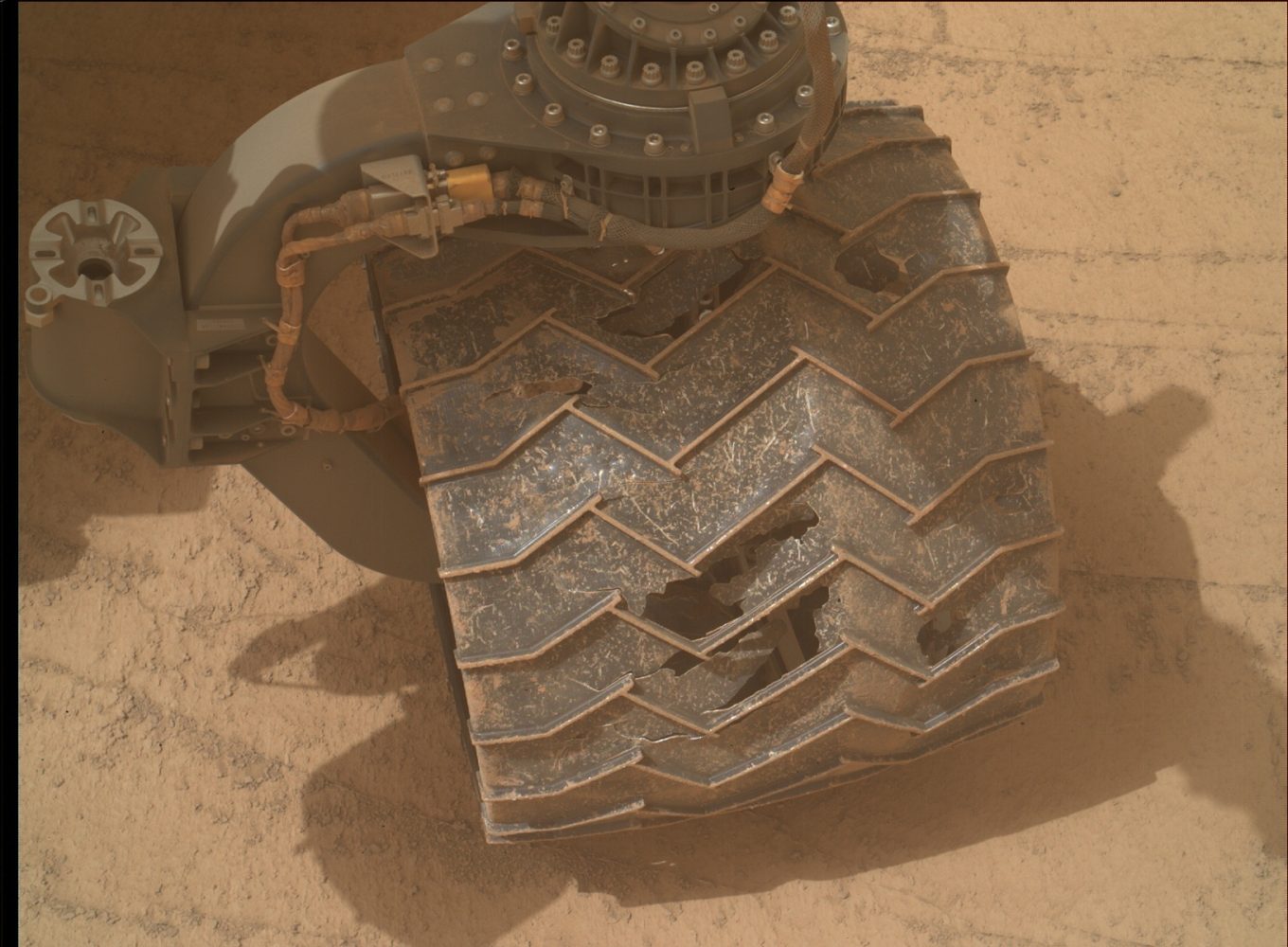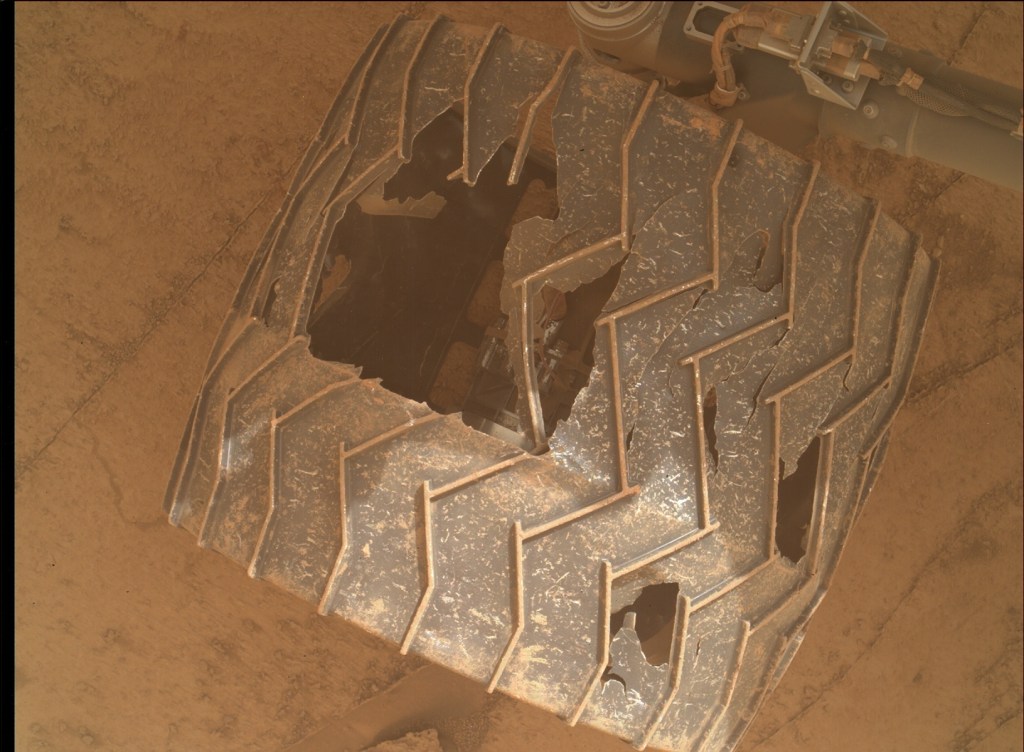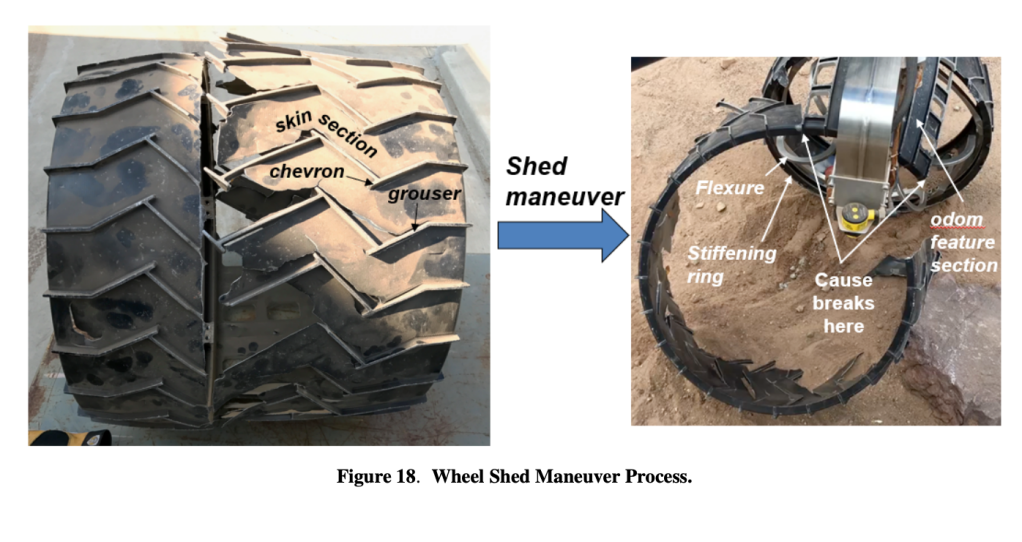
For any given Mars rover, there are three major and newsworthy events in its life: launch, landing, and discovery. Aside from those times, hardly anyone is paying attention to the myriad of images being sent back on a non-stop basis. Only the most hardcore Mars nerds or those who operate the rovers will see them. Or, anyone who follows a Twitter bot that automatically tweets the pictures. It’s thanks to this bot that word is getting out about Curiosity’s cracked wheels.
The environment on Mars is very inhospitable. Just ask Mark Watney. But one of the more unassuming hazards is the ground itself. Under normal circumstances here on Earth, driving off-road in the desert, the best equivalent to Mars, doesn’t seem all that unreasonable to us. Now think about doing that on Mars.
Imagine trying to drive somewhere with no ability to change a flat, jagged rocks everywhere, with a rover that’s the size of an SUV and done remotely from another planet where the delay in communication time is measured in double-digit minutes. You don’t have to be a JPL scientist to realize that your rover is in for a beating. And that’s exactly what’s been happening to Curiosity.

Mars rovers routinely take detailed pictures of themselves for engineers to inspect various components of their rovers. Using the Mars Hand Lens Imager (MAHLI) cam, cracks and holes can be seen on the wheels as far back as October of 2013. These have been showing up for a few years now and was expected. Because of this, the brilliant minds at NASA’s Jet Propulsion Laboratory (JPL) came up with a way to mitigate the issue. They’ll just break it off!
In a paper outlining the plan, the technique is referred to as “wheel shedding.” It’s a process where a large portion of the wheel is strategically broken off and left behind. If left unchecked to break off naturally, there’s a big concern of an electrical cable that controls the drive motor being seriously damaged, rendering that wheel inoperable. This would lead to greatly reduced overall performance since the rover would be dragging its wheel (what’s left of it, anyway).
The process goes something like this:
- Find a rock. Mars rovers are pretty good at this but it can’t be just any rock. To make this happen, they’re looking for a rock with the size and shape they need and it has to be sitting at just the right angle.
- Drive the offending wheel up to it. This technique requires a bit of precision. The idea here is not to drive at the rock at full speed.
- Get Crackin’! The rover will drive in to the rock in such a way that will intentionally cause a crack in a precise spot.
- Wash, rinse, repeat. Curiosity will back off after the first crack and reposition itself to present a new section of the wheel to the rock. It’ll repeat this process for the rest of the wheel.
- The shed. The offending section of wheel will still be trying to hold on. Curiosity will have to carefully turn and drive to get what’s left of its wheel away from the discarded section. This poses the same risk as driving without performing the wheel shedding process so this step is crucial

That process as described is very simplified, but it’s the general idea of how it works. After observing this issue, JPL revised its navigation methods and driving techniques, and it seems to be helping. It’s been nine years since the first signs of cracking, and there’s no talk of having to do any wheel shedding any time soon.
If you want to read the full paper about wheel shedding, including all of the test data and pictures of Scarecrow (an analog of Curiosity), and details of how the wheels are built, you can check it out here.
FTC: We use income earning auto affiliate links. More.

Comments